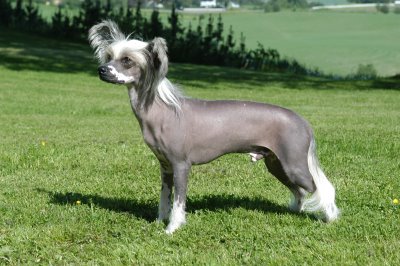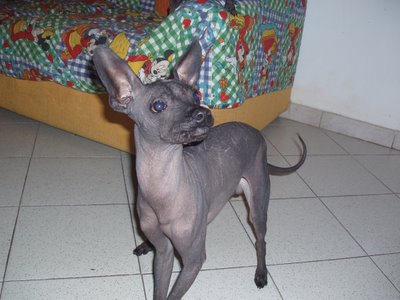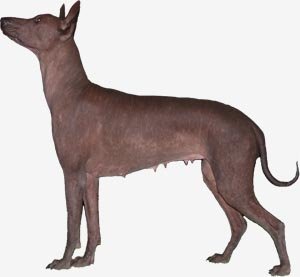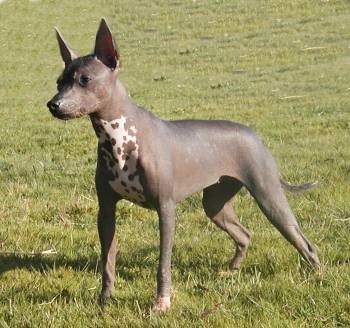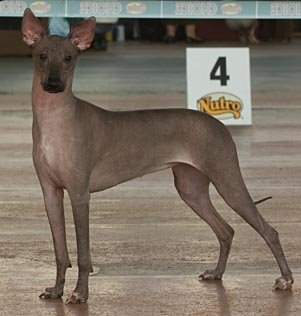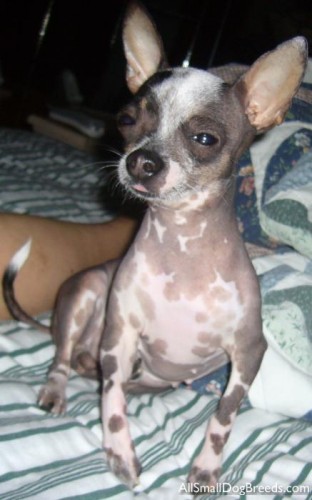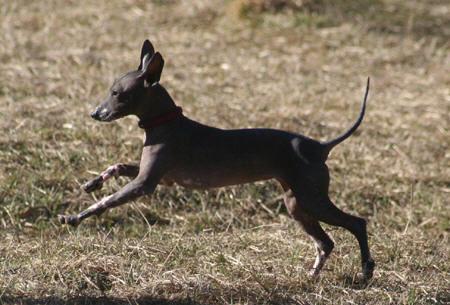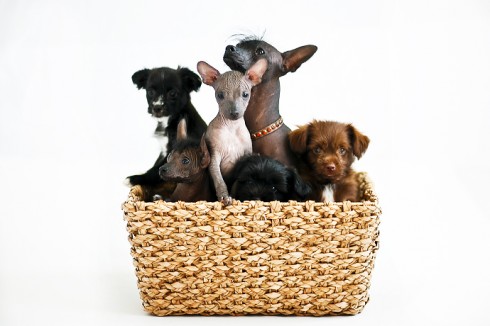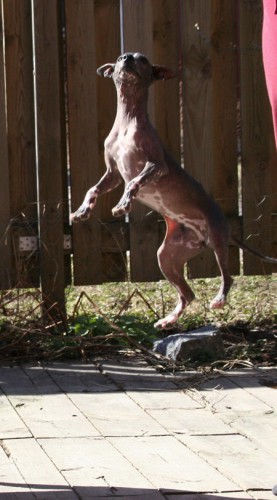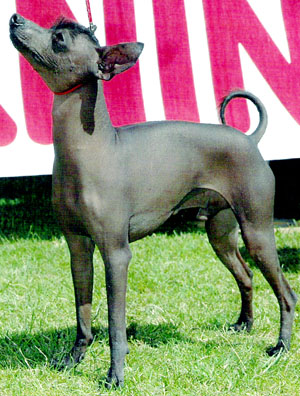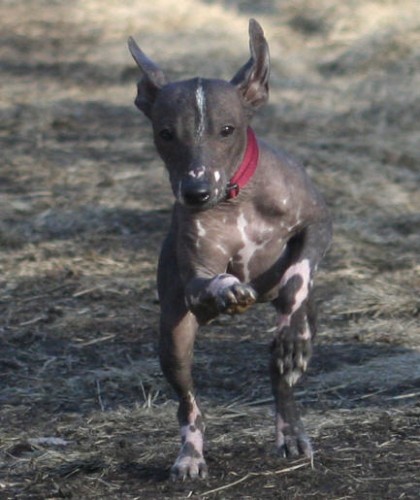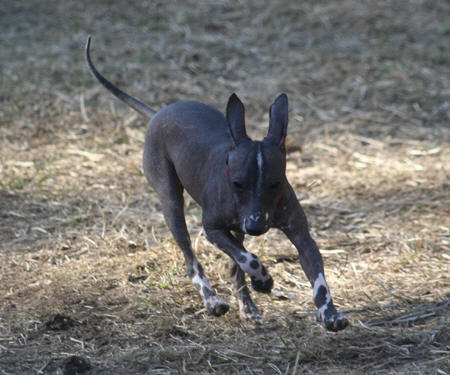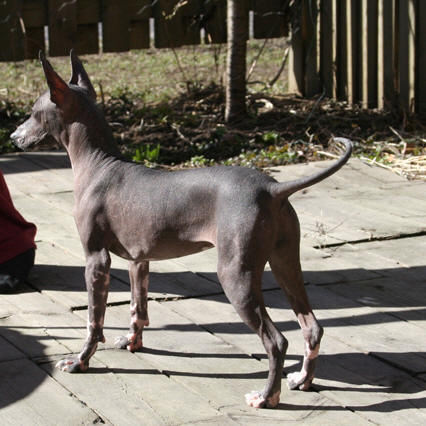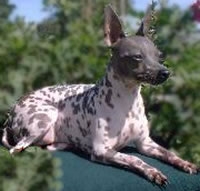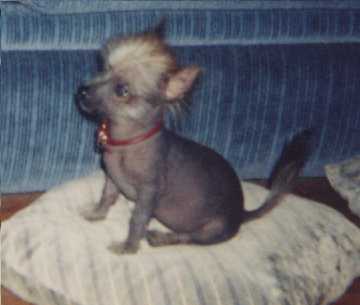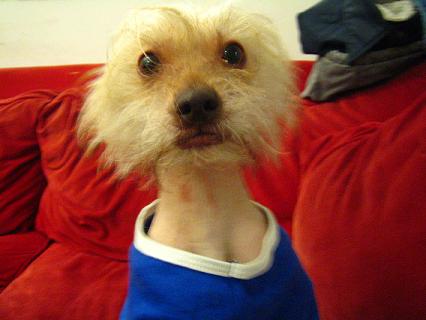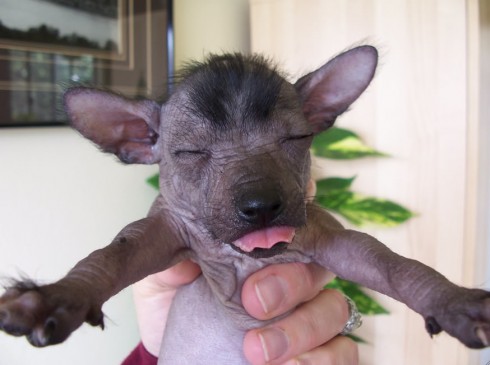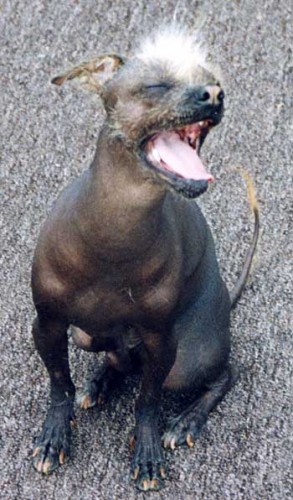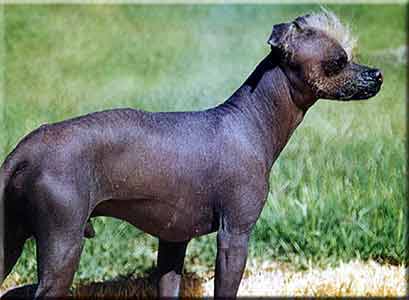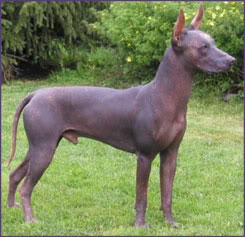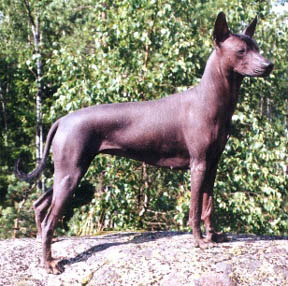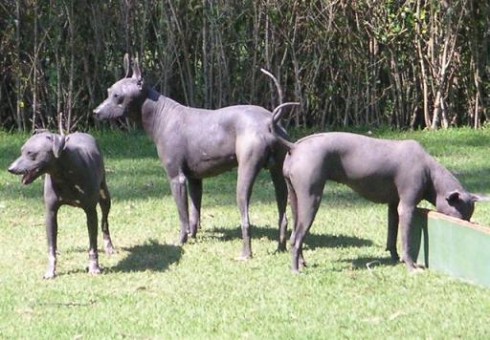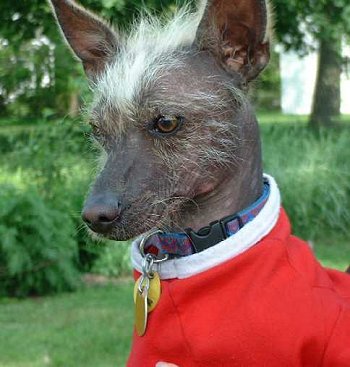Main Index
In Store
Our Web Store
Miniature Schnauzer Picture Gallery
Latest Dog Blogs
- What Are The Basic Commands To Train A Dog?
- PaySafe As The Most Popular Type Of Deposit
- Everything You Need To Know About Pet Sales
- Dogs Contribute To Our Physical And Mental Well Being
- How To Choose Where To Bet On Greyhounds In 2022
- Volunteer With Animals - How To Help Dogs Around The World
- Basic Understanding Of The House Edge
- Why You Should Get A Dog
- Top 20 Popular Dog Names Around The World
- Constipation in Dogs and How to Find Solutions
Mexican Hairless
Mexican Hairless Picture Gallery
Mexican Hairless Clubs/Associations
The Full Mexican Hairless Description
The Mexican Hairless Dog is a rare, hairless breed of dog whose size varies greatly. It is also known as Xoloitzcuintle.
Indicative Breed Standard
General Appearance
Complete or almost complete lack of hair, with a smooth and soft skin. Body slightly longer than high. Females may be slightly longer than males.
Characteristics
A quiet and tranquil dog.
Temperament
Happy, alert and intelligent, a good companion. Aloof with strangers.
Head and Skull
Viewed from above the skull is wide, strong and clean with a slightly defined occipital crest. Slight but definite stop and tapering straight muzzle with moderately developed cheeks. Nose dark in dark coloured dogs, brown or rose in blonde and bronze coloured dogs and spotted in spotted dogs. Lips tight.
Eyes
Medium sized and almond shaped. Colour varies according to skin colour, ranging from black, through shades of brown, to amber and yellow, but as dark as possible preferred.
Ears
Always erect, carried obliquely. Long, large, of delicate texture and very elegant.
Mouth
Jaws strong with a perfect, regular and complete scissor bite, i.e. upper teeth closely overlapping lower teeth and set square to the jaws.
Neck
Rather long, slightly arched and very elegant. Skin tight and firm.
Forequarters
Shoulders well laid back with flat muscles. Good angulation between shoulder and upper arm. Elbows strong and held close to the chest, never turning outward. Straight legs of good length.
Body
Strong build. Back level and perfectly straight with strong, well muscled loin. Chest deep and long reaching to the elbows. Moderately arched ribs carried well back. Gentle tuck up.
Hindquarters
Sloping croup with rounded rump which is solid and muscular. Well angulated. Hindlegs well muscled and straight, set apart.
Feet
Long and compact with tufted hair. Pads strong and resilient. Nails black in black dogs, lighter coloured in bronze or blonde dogs.
Tail
Long, thin and tapering from the base to the tip. When moving, held in a curve but never touching the back. At rest, hangs with a hook at the end.
Gait/Movement
Moves with long, free and elegant strides. At a fast trot, the head and tail held high.
Coat
Hairless although there are some tufts of harsh hair on the forehead and back of the neck that may be any colour but should not reach great length. It is common to find hairs on the feet and end of the tail.
Colour
Solid, uniform and dark colours are preferable. Black, dark grey, red, liver, bronze and blonde. There are also spotted dogs of any colour including white spots.
Size
Miniature: 25-35cms (9.75-13.75ins)
Intermediate: 36-45cms (14.25-17.75ins)
Standard: 46-60cms (18-23.5ins)
About Our Article Directory
- Article
- 27 November 2010
- 2 comments
Canis lupus familiaris
- Breed Article
- 29 May 2010
- No comments
Quick Search
Donate
Latest Dog Pods
- Tips on How to Stop Your Dog from Biting
- Beware - Not All Advertised Dog Rescues Really Are! How Can You Know The Truth?
- Helpful Tips For Dog Obedience Problems
- How to Keep Dogs From Eating Poop
- Dog Grooming Tips - A General Overview of the Very Basics of Dog Grooming
- Recognising Different Types of Dog Obedience Problems
- 5 Important Tips On Feeding A Puppy


